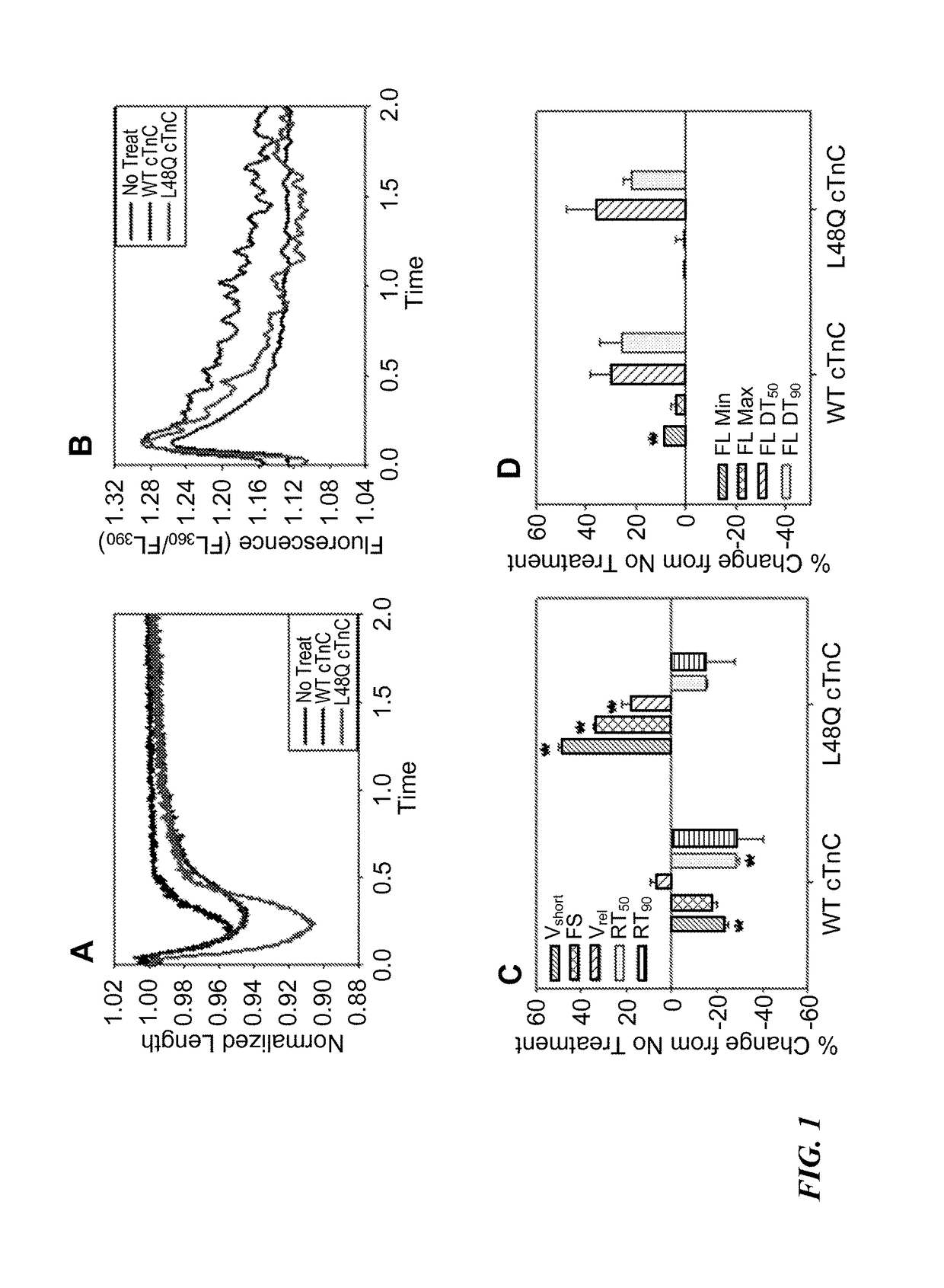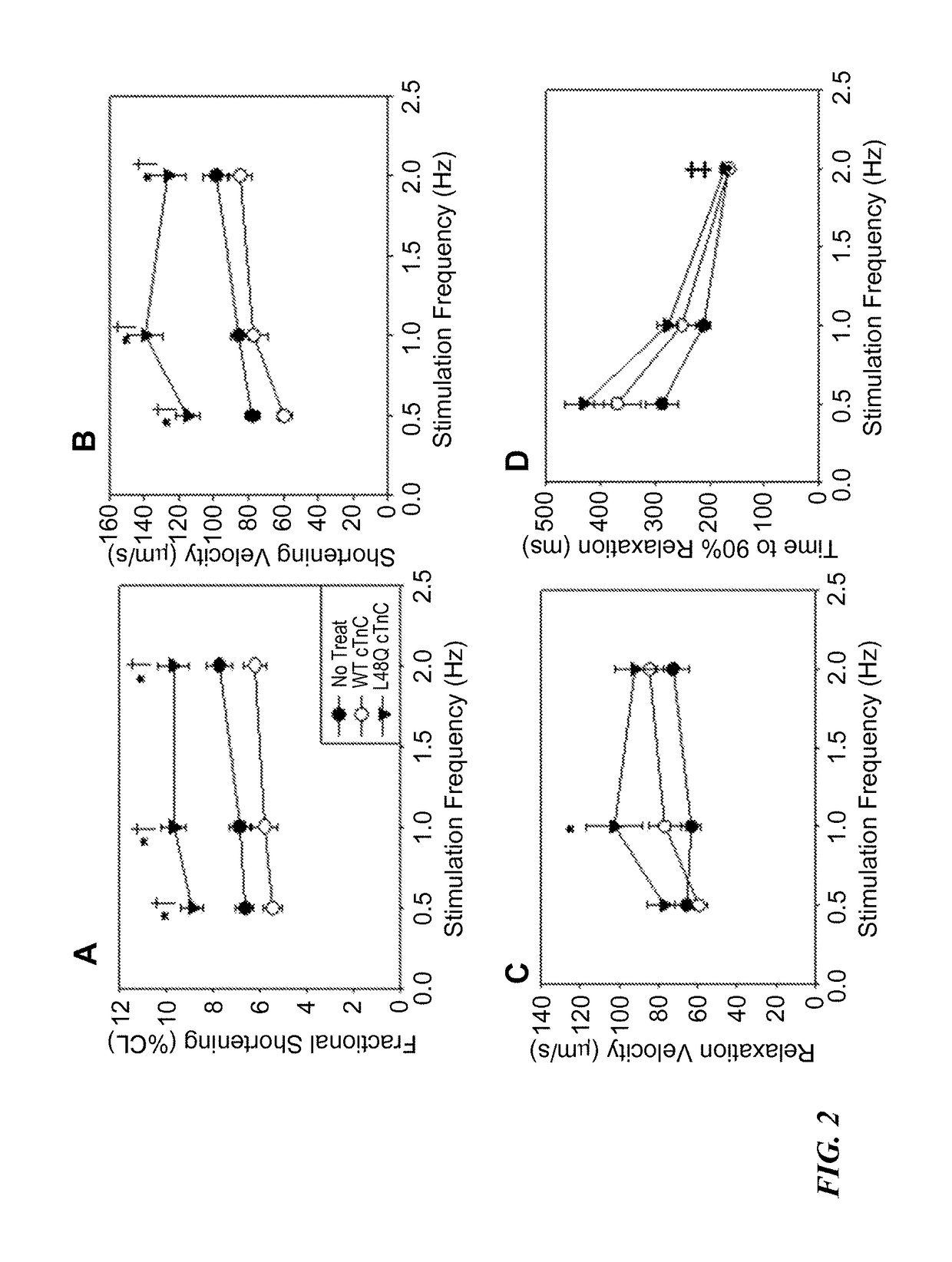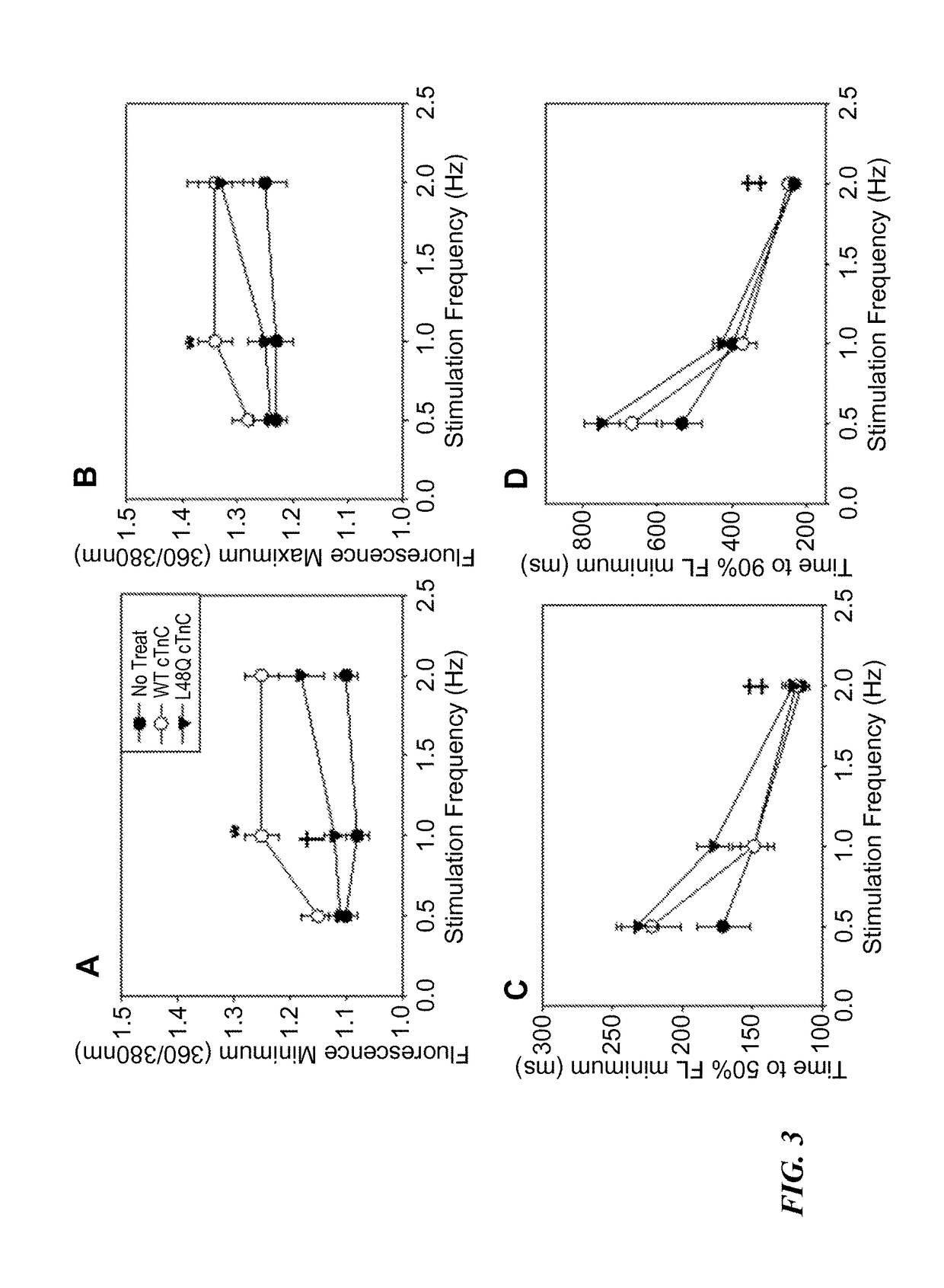Cell and gene based methods to improve cardiac function
a cell and gene based technology, applied in the field of cell and gene based methods to improve cardiac function, can solve the problems of significant compromise of cardiac function, reduced systolic function, and unknown extent of myofilament casup>2+/sup> sensitivity in the progression of diseases, so as to improve contractility, improve contractility, and increase datp levels
- Summary
- Abstract
- Description
- Claims
- Application Information
AI Technical Summary
Benefits of technology
Problems solved by technology
Method used
Image
Examples
example 1
[0164]Adult and Neonatal Cell Isolation and Culture. These studies were approved by the University of Washington (UW) Animal Care Committee and conducted in accordance with federal guidelines. Animals were cared for in accordance with US NIH Policy on Humane Care and Use of Laboratory Animals in the Department of Comparative Medicine at UW. Adult rat (Fischer 344) cardiomyocytes (ARCs) were isolated from heart using aortic retrograde perfusion for enzymatic (collagenase / protease) dispersion of cells10. Neonatal Rat Cardiomyocytes (NRCs) were isolated by enzymatic dispersion from 1-3-day old newborn Fischer 344 rats as previously described11.
example 2
[0165]Plasmid design and virus production. We produced HEK293 generated adenoviral vectors expressing histidine-tagged (N-terminal 6-His) L48Q cTnC or WT cTnC from the CMV promoter. Both vectors contained a second expression cassette for green fluorescent protein (GFP) as a transduction reporter protein, and we also expressed a vector for GFP-only. Virus was introduced to cardiomyocytes at ˜250 particles per cell.
[0166]Recombinant adenovirus containing appropriate cDNA constructs driven by the CMV promoter was used to induce overexpression of L48Q and WT cTnC in transfected cultured adult and neonatal rat cardiomyocytes. A second expression cassette for green fluorescent protein (GFP) was contained in each adenovirus as a reporter protein for successful transduction. Cardiomyocytes were infected with adenovirus containing genes for [L48Q cTnC+GFP] or [WT cTnC+GFP] for 2 days. We achieved nearly 100% transfection efficiency and gene transfer as grossly indicated by green fluorescence...
example 3
[0168]Contractile Assessments. In modified Tyrodes buffer at ambient temperature, cell shortening and relaxation of arbitrarily selected stimulated cardiomyocytes was recorded using IonOptix system video microscopy. (IonOptix, Milton, Mass., USA). Calcium transients induced by electrical stimulation were measured in Fura2 loaded cells using IonOptix equipment as described12. Fura2 fluorescence was measured using an IonOptix spectrophotometer (Stepper Switch) attached to a fluorescence microscope. Emitted Fura2 fluorescence was collected by the 40× objective, passed through a 510 nm filter and detected by a photomultiplier tube.
[0169]The effects of L48Q cTnC expression on extent and rate of stimulated shortening-relengthening and Ca2+ release-reuptake of adult rat cardiomyocytes was determined using video length-detection and fluorescence photometry, respectively (IonOptix). FIG. 1A shows representative shortening traces, and FIG. 1B shows representative Ca2+ transients (Fura2 fluore...
PUM
| Property | Measurement | Unit |
|---|---|---|
| stimulation frequency | aaaaa | aaaaa |
| stimulation frequency | aaaaa | aaaaa |
| stimulation frequency | aaaaa | aaaaa |
Abstract
Description
Claims
Application Information
 Login to View More
Login to View More - R&D
- Intellectual Property
- Life Sciences
- Materials
- Tech Scout
- Unparalleled Data Quality
- Higher Quality Content
- 60% Fewer Hallucinations
Browse by: Latest US Patents, China's latest patents, Technical Efficacy Thesaurus, Application Domain, Technology Topic, Popular Technical Reports.
© 2025 PatSnap. All rights reserved.Legal|Privacy policy|Modern Slavery Act Transparency Statement|Sitemap|About US| Contact US: help@patsnap.com



